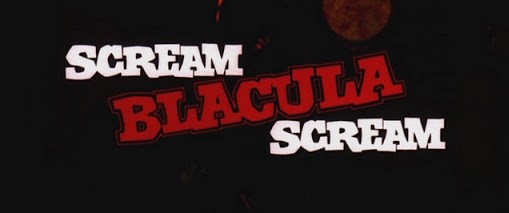Starring: William Marshall, Don Mitchell, Pam Grier and Richard Lawson
Rated: PG Fantasy/Horror
In the sequel to the award-winning hit motion picture, Blacula, this film opens with the impending death of Mama Loa, a dying priestess of vodoun. Surrounded by members of her spiritual group, she, in one of her final acts, declares her successor. Instead of selecting her biological son and “rightful” heir, Willis Daniels (Richard Lawson), Mama Loa declares her apprentice, Lisa Fortier (Pam Grier) to lead.
Deprived, Willis feels betrayed at being rejected by his mother and divine leader. His thirst for vengeance and sense of entitlement leads him to Ragman (Bernie Hamilton), a local houngan who used to practice within his mother’s collective. Willis purchases the bones of the African prince-turned-vampire, Mamuwalde (William Marshall), also known as “Blacula”. Willis intends to utilize vodoun to resurrect Blacula in order to extract retributive justice.
After performing the resurrection ritual in their family mansion, Willis is soon bitten by Blacula. Willis transforms to a submissive, under the direction of the former Black royal. As a new vampire, Willis experiences two new harsh realities: a vain man, he can no longer see his physical appearance; and his plan to control Blacula for his advancement has, conversely, failed … and failed miserably. His will to curse others who he slated for destruction actually led to his own downfall.
Shortly after being turned, Willis, with Blacula, attends a party that is held in the home of Professor Walston (Van Kirksey), who teaches African studies at the fictional Robeson University. The gathering is hosted by another of Willis’ friends, Justin Carter (Don Mitchell), a former officer with the Los Angeles Police Department. Justin has acquired an extensive collection of African artifacts. He is also interested in vodoun, especially since his girlfriend is Lisa. Upon discussing the items and correcting Walston and Justin about the provenance of a piece of jewelry that belonged to Princess Luva of the Eboni dynasty, the vampire introduces himself as Mamuwalde. Mamuwalde certainly knows the origin behind the pieces, as he is a royal descendant of the Eboni; Luva was his wife; and the necklace actually has a companion that was made exclusively for him.
At the party, Mamuwalde becomes acquainted with Lisa, who he learns is a natural practitioner of vodoun. Having to feed his hunger as a vampire, several people, including friends of Justin and Lisa are slain. Mamuwalde, in feeling a kindred connection with Lisa, confides in her of his cursed affliction. She agrees to assist him in trying to remove the dreaded curse from which he has suffered more than two-hundred years. As Justin investigates the rash of bodies that are plaguing the morgue, he concludes that something supernatural is at play. Will he be able to save others, including Lisa, from this unknown terror? Will Lisa be able to save Mamuwalde from vampirism and restore him to being a mortal? Fans will surely be tuned in to learn the outcome!
Like its predecessor, Scream, Blacula, Scream received mixed reviews from critics but was a hit with fans of the new genre of Blaxploitation horror films. As with Blacula, there is insight, even greater so, on African culture. This inclusion in Scream, Blacula, Scream involved presenting vodoun as a spiritual system; discussing location and significance of artifacts from African antiquity; and incorporating Swahili in a conversation.
William Marshall, in The Black Film Explosion of the ‘70s in Words and Pictures: What It Is, What It Was, passionately spoke of the success of this Afrocentric inclusion within the Blacula films on the Black community. Written by Gerald Martinez, Diana Martinez and Andres Chavez, the distinguished actor regaled, “I remember going to several movie houses and seeing the film and seeing the reaction of African-American audiences. You couldn’t get them to leave, because they hadn’t seen anything like this. Who had? Not I. But certainly, they hadn’t. And they were so delighted. ‘There’s our representation!’, they said. In many theaters throughout the United States, when the trailers were shown, the audiences were so wild about the trailers they couldn’t stop applauding through the opening of the next feature. The trailers became so popular that people were coming to the theater just to see them … People were so excited about seeing people of color on the screen.”
William Marshall additionally spoke on how the greater development of Mamuwalde and the positive response of African-American moviegoers impacted him. In The Black Film Explosion of the ‘70s in Words and Pictures: What It Is, What It Was, Marshall relayed, “After watching the audience enjoy Blacula, I felt good. I felt better about the whole thing, about the genre and Blacula in particular. The audience laughed, talked and were excited to see the ‘African Prince’ … I think the producers were quite surprised at how strong the positive response to the film was. They never explicitly thanked me for building the Blacula character or even offered me a bonus, but they were obviously delighted. Not for a moment did they think this was something that would become as meaningful to audiences as it did. It was more, I believe, than they had dreamed it could be.”
Scream, Blacula, Scream also had a soundtrack that featured material by various artists, including Gene Page and The Hues Corporation, who contributed to the Blacula LP. The two films, which were released together as a Blu-ray disc set by Scream Factory in 2015, has gained a serious cult, no pun intended, following.




